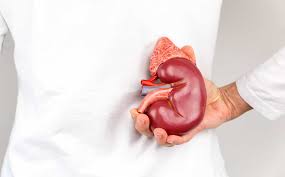Article
Novel Drug Induces Robust Responses in von-Hippel Lindau Disease-Associated Kidney Cancer
Author(s):
At a median follow-up of almost two years, 88.5% of patients remained on study treatment.
The use of MK-6482 (belzutifan) continues to induce strong clinical activity in patients with von-Hippel Lindau (VHL) disease-associated renal cell carcinoma, according to updated findings from a phase 2 study.
Moreover, the data, which were recently presented during the 2021 American Society of Clinical Oncology (ASCO) Annual Meeting, demonstrated that the drug was effective against other VHL disease-associated tumors.
“This update continues to demonstrate the activity of (MK-6482) in patients with (VHL disease)-associated renal and non-renal tumors accompanied by an acceptable safety profile,” said study author Dr. Ramaprasad Srinivasan, head of the Molecular Cancer Therapeutics Section, Center for Cancer Research, National Cancer Institute.
Sixty-one patients (median age, 41 years; 52.5% males) who were diagnosed with VHL disease based on germline alteration who had at least one measurable renal cell carcinoma tumor, had not received any prior systemic anticancer therapy, did not have metastatic disease, and had an ECOG performance status of 0 or 1 (a patient’s level of functioning and ability to care for themselves with 0 being fully functioning and 4 being disabled).
As of data cutoff, which was at a median of 21.8 months after enrollment, 88.5% of patients were still receiving treatment.
Responses in target renal cell carcinoma lesions were observed in 30 patients; all of which were partial responses (a decrease in size of the tumor in response to treatment), and another four patients had unconfirmed partial responses. Stable disease was reported in 49.2% of patients and one patient was not evaluable. Ninety-two percent of patients had a decrease in target renal cell carcinoma lesion size.
The median time to treatment response was 8.2 months and the duration of response was not reached. The progression-free survival (time during and after treatment when the patient lives without disease progression) rate at 12 months was 98.3% and 96.5% at 24 months, however a median progression-free survival has not yet been reached.
In pancreatic lesions, responses were reported in 77% of patients, with complete responses (disappearance of all cancer in response to treatment) in 9.8% and partial responses in 67.2%. Among pancreatic neuroendocrine tumors, the objective response rate (or the rate of a measurable response to the treatment) was 90.9% with complete responses in 13.6% and partial responses in 77.3%. The objective response rate was 30% in central nervous system hemangioblastomas with complete responses in 6% and partial responses in 24%.
Sixty-nine percent of retinal hemangioblastomas were improved and 31% were stable as best response.
All patients reported a treatment-related side effect. Serious or severe side effects were observed in 32.8% of patients and life-threatening or fatal side effects occurred in 14.8%. Side effects led to discontinuation in 1.6% of patients and a side effect led to death in one patient, but it was not treatment related.
The most common side effects were anemia (90.2%), fatigue (65.6%), headache (41.0%), dizziness (39.3%) and nausea (34.4%). Most of the side effects were mild to moderate in severity, but common serious or severe side effects were anemia (8.2%) and hypertension (8.2%).
Recently, the Food and Drug Administration granted the drug a priority review for the treatment of patients with VHL disease–associated renal cell carcinoma who do not require immediate surgery based on earlier results of this study. A priority review is a program the agency established to expedite the review process for drugs that are expected to have a particularly great impact on the treatment of a disease.
For more news on cancer updates, research and education, don’t forget to subscribe to CURE®’s newsletters here.




